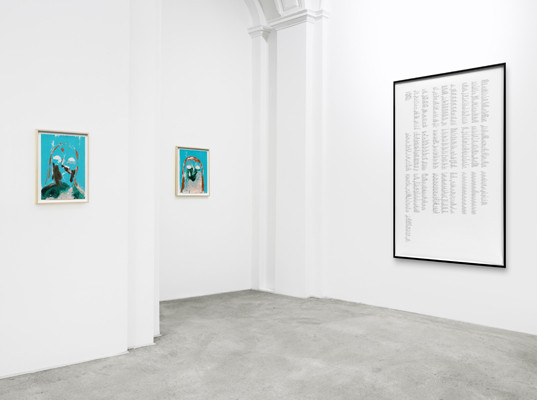Play
20 Oct - 21 Nov 2015
PLAY
20 October - 21 November 2015
John Baldessari
Alejandro Cesarco
Louise Lawler
Haim Steinbach
Nicola Tyson
Organized by Alejandro Cesarco
Act I.
Play is both verb and noun. As a verb, it has no rules (although games do), but as a noun it is often scripted. As viewers (and producers), we are usually caught somewhere in the middle.
Playing calls to mind the world of children and make believe; it can be frightening and exhilarating because it almost always leads to unforeseeable places, because of the way it may surprise. The exhibition equates playing with creative misreading, misappropriating, allegorizing; and games (with their rules, expectations, and limitations) with style, tradition, and the foreseeable.
Act II.
In any cultural field it seems impossible to be original except on the basis of tradition. The interplay between originality and the acceptance of tradition as the basis of inventiveness may be interpreted as an example of what the English child psychoanalyst D. W. Winnicott characterizes as the interplay between separateness and union. The ‘transitional object’, or, ‘the paradox that I accept and do not attempt to resolve’, as he claims. Winnicott locates creative playing and cultural experience in the potential space between the individual and their environment. Winnicott’s idea of play is foregrounded in the relationship of trust and reliability that may develop between baby and mother. Who then serves as the mother in our creative (artistic) playing? Could this perhaps be the role of tradition?
Act III.
'Play' stages correspondences, affinities and genealogies - ideas which manifest tradition. It elaborates on the ethics of admiration, on repeating as a means of varying. It problematizes the artistry of referencing and reminds us of the potentials of allegory as method.
20 October - 21 November 2015
John Baldessari
Alejandro Cesarco
Louise Lawler
Haim Steinbach
Nicola Tyson
Organized by Alejandro Cesarco
Act I.
Play is both verb and noun. As a verb, it has no rules (although games do), but as a noun it is often scripted. As viewers (and producers), we are usually caught somewhere in the middle.
Playing calls to mind the world of children and make believe; it can be frightening and exhilarating because it almost always leads to unforeseeable places, because of the way it may surprise. The exhibition equates playing with creative misreading, misappropriating, allegorizing; and games (with their rules, expectations, and limitations) with style, tradition, and the foreseeable.
Act II.
In any cultural field it seems impossible to be original except on the basis of tradition. The interplay between originality and the acceptance of tradition as the basis of inventiveness may be interpreted as an example of what the English child psychoanalyst D. W. Winnicott characterizes as the interplay between separateness and union. The ‘transitional object’, or, ‘the paradox that I accept and do not attempt to resolve’, as he claims. Winnicott locates creative playing and cultural experience in the potential space between the individual and their environment. Winnicott’s idea of play is foregrounded in the relationship of trust and reliability that may develop between baby and mother. Who then serves as the mother in our creative (artistic) playing? Could this perhaps be the role of tradition?
Act III.
'Play' stages correspondences, affinities and genealogies - ideas which manifest tradition. It elaborates on the ethics of admiration, on repeating as a means of varying. It problematizes the artistry of referencing and reminds us of the potentials of allegory as method.

